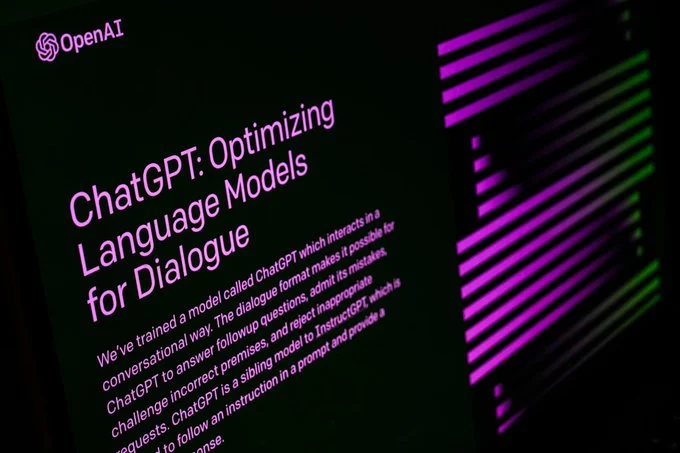ChatGPT: Everything You Need to Know in 2025
ChatGPT remains one of the most talked-about AI tools in the world—and for good reason. As of 2025, ChatGPT has amassed over 300 million weekly active users, solidifying its place as a must-have productivity assistant, content generator, and virtual companion. If you’ve ever wondered how ChatGPT works, what’s new in its recent updates, or what future plans OpenAI has for its flagship AI chatbot, you’re in the right place. This blog covers everything you need to know about ChatGPT in 2025, using expert insights, product updates, and projections that can help you decide how to use the platform most effectively.
Image Credits:Leon Neal / Getty ImagesChatGPT in 2025: New Features and Major Developments
OpenAI has consistently delivered game-changing innovations, and ChatGPT’s evolution in 2025 is no exception. One of the most significant updates came with the release of GPT-4o, a new version of the large language model that powers ChatGPT. GPT-4o introduces voice interaction, multimodal capabilities (text, image, voice), and faster response times. Thanks to these improvements, ChatGPT is no longer just a text generator—it’s a full-fledged conversational AI assistant that can listen, speak, and respond intelligently across various formats.
Another big development is Sora, OpenAI’s highly anticipated text-to-video model, which integrates seamlessly with ChatGPT for creative projects. Whether you're crafting short video scripts or generating animated content, the partnership between ChatGPT and Sora enhances content workflows. Users have also seen the platform expand into app ecosystems, notably with Apple's announcement to include ChatGPT via Apple Intelligence—bringing the AI model into iPhones, iPads, and Macs in a privacy-preserving way.
Yet despite these advancements, OpenAI has encountered its fair share of controversy. Leadership shake-ups—most notably the exit of CTO Mira Murati and co-founder Ilya Sutskever—have fueled debates about the company's direction. Simultaneously, OpenAI is navigating legal battles involving copyright claims and a high-profile lawsuit from Elon Musk aimed at halting its for-profit transition. These issues raise questions about transparency, ethics, and the commercial trajectory of ChatGPT and its underlying models.
How ChatGPT Stays Competitive Amid Rising Global Rivals
Even as it leads in Western markets, OpenAI is facing growing competition—particularly from Chinese AI firms like DeepSeek, which have made strides in real-time translation and knowledge synthesis. To stay ahead, OpenAI is doubling down on partnerships and infrastructure. Reports suggest the company is working on one of the largest funding rounds in AI history, likely aimed at scaling computing resources, launching a massive data center project, and boosting its international presence.
Part of this expansion strategy includes tightening relationships with policymakers. OpenAI is actively engaging with Washington lawmakers to help shape future AI legislation, ensuring favorable regulatory frameworks for tools like ChatGPT. With concerns over ethical AI, misinformation, and user privacy intensifying, this outreach is seen as a critical move for the platform’s long-term sustainability.
From an end-user perspective, ChatGPT continues to prioritize user-friendly design and expanded accessibility. The chatbot’s mobile app has received regular updates, while the desktop experience now supports custom GPTs—allowing users to create tailored assistants for everything from coding help to personal coaching. Additionally, ChatGPT’s usage costs remain competitive, with a free tier offering GPT-3.5 and a subscription-based ChatGPT Plus plan unlocking GPT-4o features for power users.
ChatGPT’s Product Timeline and What’s Coming Next
Staying up to date with ChatGPT is easier when you follow its product timeline. Each month, OpenAI introduces incremental changes—often rolling out experimental features to Plus users first before a broader release. Some of the most impactful updates from January to June 2025 include improved memory handling, expanded voice and image capabilities, reduced latency in query responses, and support for third-party integrations.
For example, the average ChatGPT query now consumes energy comparable to running a lightbulb for a few minutes, sparking discussions about sustainability and responsible AI usage. Sam Altman, OpenAI’s CEO, even shared that one ChatGPT interaction uses about 1/15th of a teaspoon of water—data that’s become central to the ongoing conversation about AI’s environmental footprint.
Looking ahead, OpenAI is expected to announce a new enterprise suite of ChatGPT tools designed for teams, developers, and educators. These features will likely include enhanced collaboration tools, better integration with third-party apps, and more robust privacy controls. We also anticipate updates to ChatGPT’s API capabilities, enabling smoother embedding of AI into external platforms like customer service systems, educational software, and CRM tools.
Whether you’re a content creator, developer, marketer, or curious learner, keeping up with ChatGPT's latest updates helps you unlock more of its value. OpenAI has positioned ChatGPT not just as a chatbot but as a foundational tool for digital productivity in the AI age.


